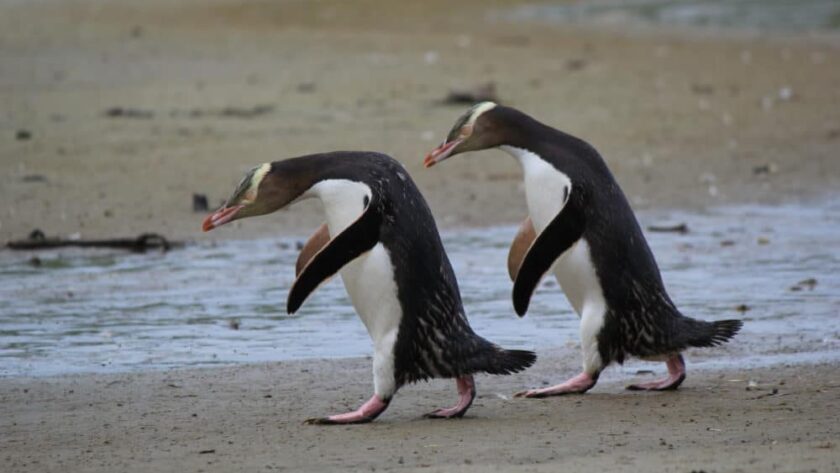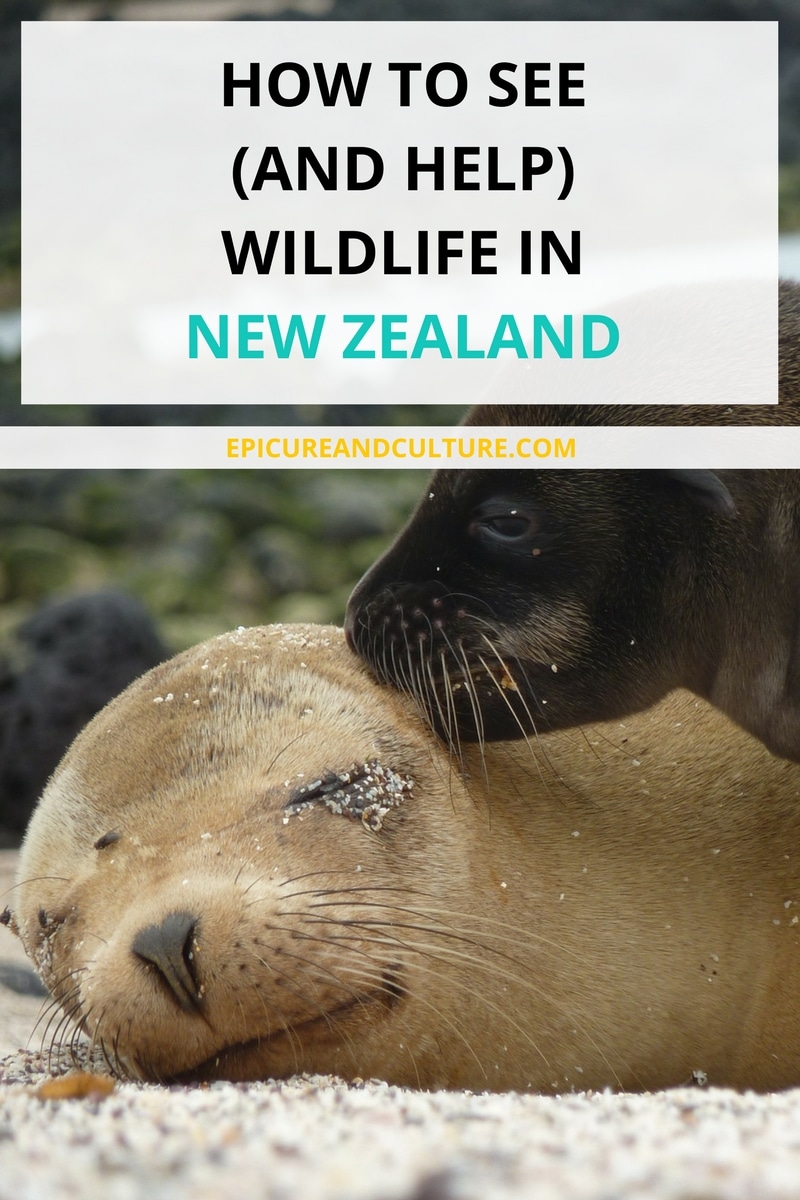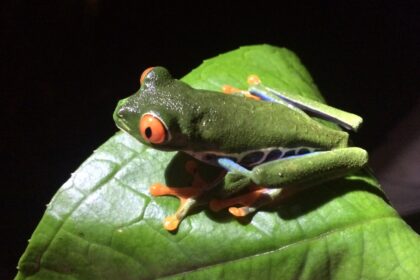By Katie Foote, Epicure & Culture Contributor
“You’re going on a New Zealand wildlife tour? What kind of wildlife is there in New Zealand?!” my mother asked.
“Good question,” I responded.
Even after living in the Auckland for over a year, I could more easily list the fictional characters of Lord of the Rings than the actual flora and fauna of the country.
But while New Zealand isn’t a common destination for safari enthusiasts, the country actually has dozens of species found nowhere else on Earth — and a fascinating conservation history.
For many, Dunedin on the Otago Peninsula is the best place to uncover New Zealand wildlife because it has the highest concentration of endangered animals in the country.

Pre-Human Inhabitants In New Zealand
Before humans came to New Zealand, the only mammals were bats and the whales swimming off-shore. Eighty-five percent of the islands were covered in bush and most of the islands’ inhabitants were forest birds.
The lack of natural predators meant several species lost defensive capabilities, including the ability to fly. This includes the kiwi, a chicken-sized flightless bird found only in New Zealand. This awkward-looking nocturnal animal is celebrated as a national icon — to an extent that people from New Zealand are often referred to as “Kiwis” — and a symbol of conservation.
#Didyouknow that before humans, the only mammals in #NewZealand were #bats, #seals and #whales? Click To Tweet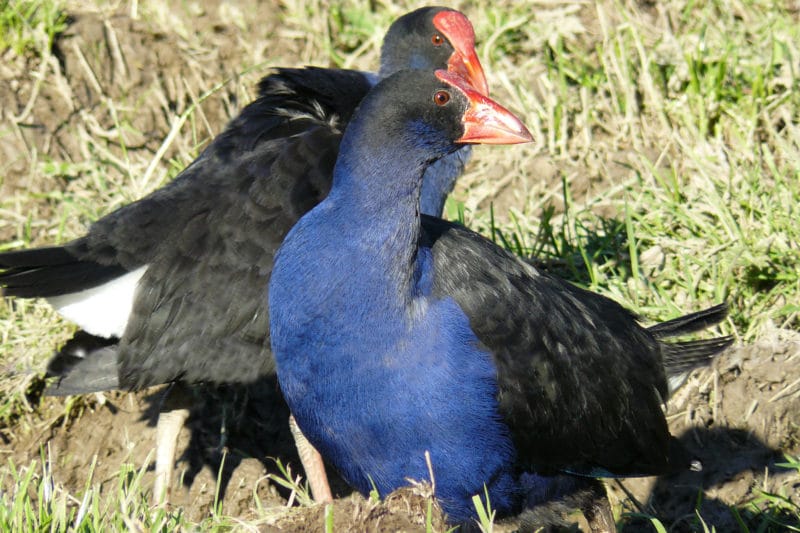
The Arrival Of Humans
Since the arrival of Maori and Europeans a millennium ago, two-thirds of the native bush has been cleared for farming, grazing land and urban centers. Most of the trademark New Zealand scenery has been imported from abroad, including grass from the UK, yellow gorse from Scotland and pine trees from California.
Hunting and deforestation caused the extinction of certain species, but imported predators now pose the biggest threat to New Zealand wildlife. Humans brought with them rats, stoats, possums, dogs, and cats, all of whom can easily capture and devour flightless birds (including the kiwi, pukeko and takahe), especially without the protection of dense forest bush. The changing landscape exposed many native species to predators, causing the extinction of a third of land-based birds, with more highly endangered.
Fortunately, the New Zealand government, volunteer groups and private organizations have been able to rescue some species from the brink of extinction, reviving populations of the takahe, fairy tern, saddleback and the parrot kakapo, often protecting them in sanctuaries on pest-free private islands.
The #NewZealand government and #volunteers have saved many species from #extinction Click To Tweet
Current Conservation Efforts In Dunedin
In Dunedin, the hoiho (yellow-eyed penguin) is a primary focus of conservation efforts. Even the local airport collects donations while announcing, “the irony of the airport supporting the preservation of a flightless bird isn’t lost on us,” in a typical cheeky New Zealand fashion.
Other companies, like Elm Wildlife Tours, use proceeds from their tours to fund their own private conservation areas. Elm Wildlife works with local farmers to plant native bush and maintain traps to keep pests out.
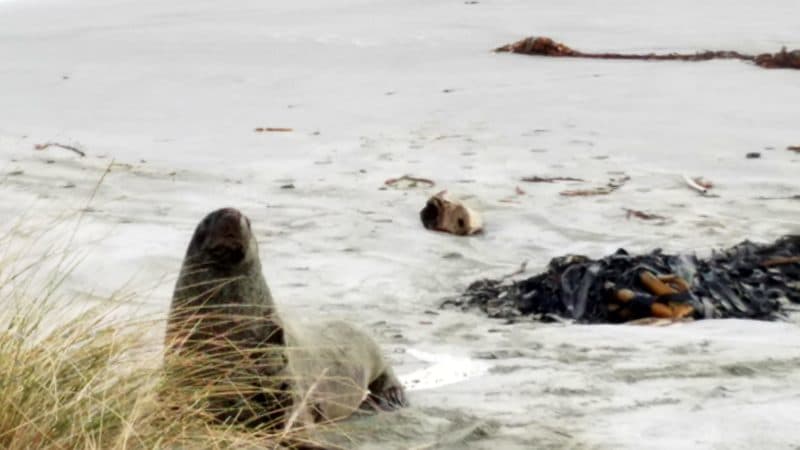
In addition to these penguins, who are often most spotted marching up the hill at sunset to sleep in their nests, New Zealand fur seals love to lounge on the rocks, with the pups splashing in pools. While hunters almost wiped out this species, fur seals are one of the country’s success stories with large numbers living on both islands.
When it comes to New Zealand hikes, there is a lot to experience. Here, if you hike around the corner to the beach, you can also find Hooker Sea Lions napping in the sand dunes.
This endemic species is the rarest of the world’s five sea lion varieties, found only on the Otago Peninsula, in the Catlins and other nearby islands.
Want to see #endangered species in their natural habitat in #NewZealand? Here's how! #wildlife Click To Tweet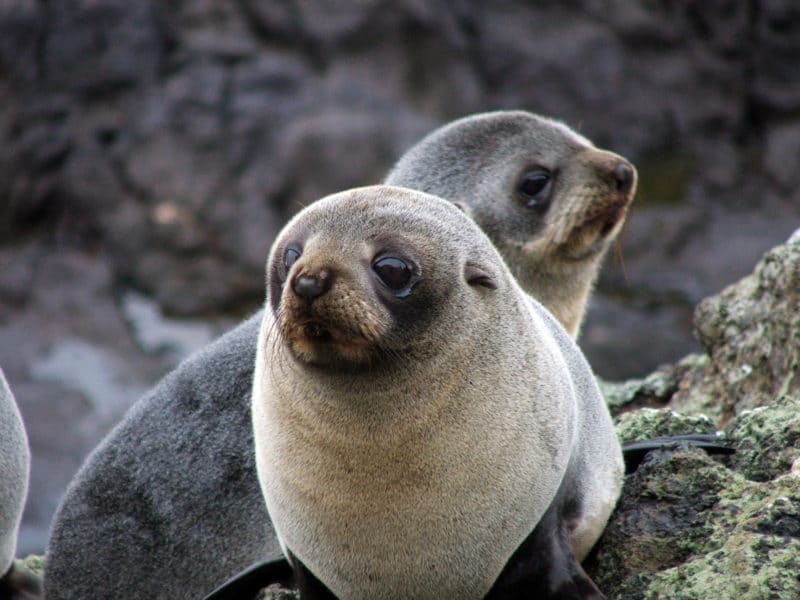
When talking to Elm Wildlife Tours co-owner Shaun Templeton, I learn volunteers and the New Zealand public are critical of New Zealand’s conservation efforts. He explains, “The Department Of Conservation has a huge task in front of them but they are sadly under-funded and under-staffed. Groups like Save The Otago Peninsula (STOP) and Otago Peninsula Bio-diversity Group (OPBG) do an amazing job of controlling predators on the peninsula. They also provide information and run workshops for the public on what is the best way to trap certain predators, manage invasive plants and help restore native vegetation to areas that have been denuded of its native vegetation. These are crucial to the survival of the Yellow Eyed Penguins.”
This is why it’s so important to support conservation-focused tour companies, like Elm Wildlife and Nature’s Wonder. These organizations use your admissions to grow and maintain private reserves and spread awareness of important New Zealand wildlife issues. It’s a tour you can feel good about, because you meet some incredibly unique species while becoming personally aware of why it’s important to protect them.
Hopefully increasing awareness will cause New Zealanders to encourage the government to continue to make conservation a priority with regards to funding, ensuring that future generations can enjoy these charismatic creatures and other New Zealand wildlife.
Katie Foote
Latest posts by Katie Foote (see all)
- 8 Outstanding Conservation Safaris Around The World - Apr 12, 2022
- These 10 Women Whiskey Distillers Will Make You Crave A Manhattan - Dec 12, 2018
- Ethical Travel: Should You Visit Thailand’s Long Neck Women Villages? - Dec 9, 2018
- 8 Pioneering Vegetarian Vacations Around The World - Aug 13, 2018
- A New Perspective: Can Travel Help Reverse Alzheimer’s? - Aug 5, 2018

